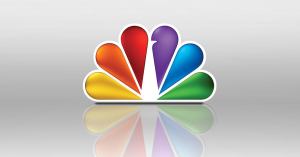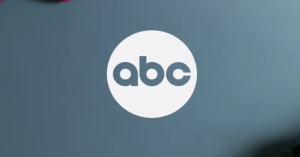Starting in 2021, Comcast is imposing new data caps on home Internet customers in the northeastern U.S., and many are furious. After the announcement on Monday, social media filled up with angry outbursts at the Internet service provider, including accusations of greed and calls for a migration to alternative options. Many customers were particularly angry that these caps were being added during a pandemic when home internet usage is more important than ever.
According to a report by The Verge, Comcast customers will soon be held to a data cap of 1.2 terabytes (TB) of data in a month. Beyond that, there will be a charge of $10 for every additional 50 gigabytes (GB) used. The charge will cap at $100. This is a system Comcast Xfinity already uses for certain types of plans in certain parts of the country, but starting starting next year, the ISP will no longer be offering “unlimited” data plans in the U.S. Instead, customers will get one “courtesy credit” per year for those extra charges.
Videos by PopCulture.com
This will impact customers in Connecticut, Delaware, Massachusetts, Maryland, Maine, New Hampshire, New Jersey, New York, Pennsylvania, Virginia, Vermont, West Virginia, Washington D.C., and parts of North Carolina and Ohio. People from all over the regions were furious upon hearing the news.
As they saw it, this new system is particularly egregious in the middle of the coronavirus pandemic, when customers are spending more time at home than ever, and are working from home in many cases. There is also the issue of virtual school for students, not to mention streaming, video games, browsing, and network devices like printers that often draw on data without users realizing it.
All in all, the backlash to Comcast Xfinity’s new data cap plan was overwhelming. Here is a look at what customers had to say.
Utility
Internet should be treated as a utility. 2020 alone should be proof enough how mandatory having internet is in our society.
— PKSparkxx #BlackLivesMatter (@PKSparkxx) November 24, 2020
Also, Comcast’s clear monopoly needs to be addressed. https://t.co/YCWLR3zVdL
Many customers argued that Internet service needs to be treated less like a luxury, and more like a utility, beholden to the same rules and restrictions as electricity, water and heat. For this, many wanted more government oversight.
Profiteering
you were prepared to set data caps and charge customers overage fees at a time where much of the country is working or attending school remotely. you literally are profiteering when many have no choice of provider and less income. you are so awful
— anton lestrange (@huge_mclarge) November 24, 2020
Lol @comcast changing their data cap limits to profit off the COVID crisis. Doesn’t surprise me one bit from such a shit company.
— Formerly Fake Jim Caldwell (@Fake_Caldwell) November 24, 2020
Many customers did not believe that Comcast’s new price structure reflected its increased operation costs based on increased Internet usage. Instead, they saw this as opportunistic profiteering off of the pandemic, plain and simple.
Past Promises
Remember when people were talking about saving net neutrality? Comcast said “we would never cap your data or throttle your speed”. We’ll here’s the data cap. Happening when so many people are working or schooling from home. https://t.co/v3M1TXqU7P
— Momo (@Momostweeter) November 24, 2020
Customers also brought up previous promises from Comcast and other ISPs, made during advertisements or during other instances of public backlash. They urged other customers to make note of the inconsistencies in these kinds of releases.
Trump Administration
Thanks, Trump! Thanks, Ajit Pai!
— Wearthony Masktano (@theneedledrop) November 24, 2020
Thanks everyone who thought eliminating Net Neutrality wasn’t a big deal!https://t.co/wyeSniaWpU
Many angry Internet users harkened back to the fight for Net Neutrality, particularly when it came to President Donald Trump’s appointed FCC Chairman Ajit Pai. They argued that this was another delayed effect of Trump’s relaxed business policies.
Alternatives
last year we switched from Comcast to our municipal fiber company (which gives 1Gb up/down at $70 a month, no contract) and since then I get probably 3 calls a month from Comcast with all kinds of special offers and perks to get me to come back.
— isi baehr-breen (its pronounced ‘izzy’) (@isaiah_bb) November 24, 2020
Eat shit. https://t.co/5G5ySp0bKP
Comcast trying to push data caps on internet usage. @googlefiber is $70 a month for 1 Gig upload and Download with no caps. They have lobbied so hard to stop google fiber from spreading because they know they would have to start offering better service if they had to compete. https://t.co/JWYoIeRP3G
— DansGaming (@Dansgaming) November 24, 2020
Many customers of alternative ISPs took this opportunity to promote the company they subscribe to, particularly if it was a start-up or a smaller company. While large providers have an overwhelming advantage, some small regional providers are gaining traction slowly but surely.
Video Chats
Yea my first thought is how much data does Zoom use
— Vince Fennel (@VinceFennel) November 24, 2020
Some speculated that data caps like this would gradually decrease the use of video chatting services like Zoom, even during the pandemic. They hoped that work meetings would begin transferring to regular phone calls rather than draining their data.
Average Use
Two kids online schooling and my wife and I work from home. I’m not okay with this. “Sorry son, you cannot play online with your friends after school today” pic.twitter.com/XGbFM7vcOC
— JESS (@CapitolEthan) November 24, 2020
Comcast is lying. Shocker. With all the 4k HDR video, I can assure you 1.2 TB is not a massive amount of data today. It would be like capping at 50 GB a couple years ago.
— citizen uprising (@cit_uprising) November 24, 2020
The internet is a utility. We paid for it. Claw it back from these corrupt and incompetent crooks. https://t.co/91BpeZSZq1
Comcast claimed that the average customer does not use more than the 1.2TB of data provided, yet many customers posted their own Internet logs to refute that. With children attending virtual school and parents working remotely, many cannot afford to worry about data caps right now.
Many also noted that streaming services are offering high-definition video by default now, drawing even more data. Some customers shared tips about how to drop the video quality on the TV shows and movies they do not necessarily need to see in 4K HDR.
Most Viewed
-

NEW YORK CITY – DECEMBER 19: "Toil and Trouble" – Elsbeth is thrown into the world of television after the showrunner of a long-running police procedural is brutally murdered in his office, and although it appears to be the act of a disgruntled fan, she begins to suspect the show's longtime star Regina Coburn (Laurie Metcalf) who yearns for artistic fulfillment. Meanwhile, Judge Crawford (Michael Emerson) continues to be a thorn in Elsbeth's side, on the CBS original series ELSBETH, Thursday, Dec. 19 (10:00-11:00 PM, ET/PT) on the CBS Television Network, and streaming on Paramount+ (live and on demand for Paramount+ with SHOWTIME subscribers, or on demand for Paramount+ Essential subscribers the day after the episode airs). Pictured (L-R): Carrie Preston as Elsbeth Tascioni and Carra Patterson as Kaya Blanke. (Photo by Michael Parmelee/CBS via Getty Images)







